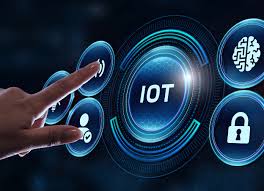IoT (Internet of Things) data analytics techniques enable organizations to extract valuable insights from the massive amounts of data generated by IoT devices. These techniques involve the application of various data analysis and visualization methods to uncover patterns, trends, anomalies, and actionable information from IoT data. Here’s an introduction to some common IoT data analytics techniques:
- Descriptive Analytics:
Descriptive analytics focuses on summarizing and visualizing historical IoT data to gain a better understanding of past events and trends. It involves techniques such as data aggregation, data profiling, and data visualization. Descriptive analytics provides insights into the overall performance, usage patterns, and behavior of IoT devices or systems. - Diagnostic Analytics:
Diagnostic analytics aims to identify the root causes of specific events or issues in IoT data. It involves techniques such as correlation analysis, regression analysis, and anomaly detection. Diagnostic analytics can help organizations understand why certain events occurred, detect anomalies or deviations from normal behavior, and identify factors influencing IoT system performance. - Predictive Analytics:
Predictive analytics leverages historical IoT data to make predictions or forecasts about future events or outcomes. It involves techniques such as machine learning algorithms, time series analysis, and predictive modeling. By analyzing patterns in historical data, predictive analytics enables organizations to anticipate equipment failures, detect anomalies in real-time, and optimize operations based on future predictions. - Prescriptive Analytics:
Prescriptive analytics goes beyond predictions and provides recommendations or actions to optimize IoT system performance. It combines historical data analysis with optimization algorithms, simulation models, and decision support systems. Prescriptive analytics helps organizations make informed decisions about resource allocation, process optimization, and proactive maintenance actions based on data-driven insights. - Real-time Analytics:
Real-time analytics focuses on analyzing IoT data as it is generated in real-time or near real-time. It involves techniques such as stream processing, complex event processing, and real-time machine learning. Real-time analytics enables organizations to detect and respond to events, anomalies, or critical conditions as they occur, facilitating real-time decision-making and immediate actions. - Edge Analytics:
Edge analytics involves performing data analysis and processing at the edge of the network, closer to the data source. By analyzing data locally at the edge devices or fog nodes, edge analytics reduces latency, optimizes bandwidth usage, and enables real-time or near real-time decision-making without relying solely on cloud servers. - Visual Analytics:
Visual analytics combines data analysis techniques with interactive visualizations to explore and understand IoT data effectively. It involves techniques such as dashboards, data visualization, and interactive data exploration tools. Visual analytics enables users to identify patterns, trends, and anomalies in IoT data through intuitive and interactive visual representations.
By leveraging these IoT data analytics techniques, organizations can gain valuable insights, improve operational efficiency, optimize resource utilization, and make data-driven decisions in various domains such as smart cities, manufacturing, healthcare, and energy management. The choice of analytics techniques depends on the specific IoT use case, data characteristics, business objectives, and available resources.
